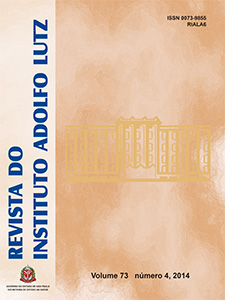Monitoring the extraneous matters in pulps of tomato, guava, mango and strawberry marketed during the seasons of the year
Resumen
Fruit-derived products sold in Brazil and for exportation are required to comply with the quality and safety standards. These products and, among them, the fruit pulps may contain extraneous materials due to the inappropriate conditions or practices during their production, storage and distribution, including filth, decomposed material and miscellaneous materials. This study aimed at evaluating the sanitary conditions (regarding to extraneous materials) of fruit pulps sold in the Great São Paulo, during the four seasons of 2010. This investigation analyzed 115 tomato pulp, 93 guava pulp, 99 strawberry pulp and 89 mango pulp by means of the techniques described in the AOAC, 18th, 2005, Chapter 16 - Extraneous Materials: Isolation. Insect fragments were the most frequent filth category detected in the pulps (in 93 % of guava and strawberry, 77 % of tomato and 48 % of mango samples), followed by the rodent hair (in 24 % of tomato, in 3 % of guava, in 1 % of strawberry and in 0.5 % of mango samples). The occurrence of mites was mostly frequent in strawberry samples (33 %). This study indicated that the majority of the analyzed pulps showed satisfactory sanitary conditions, evidencing that the Good Manufacturing Practices was adopted by the productive sector.
Publicado
2015-10-02
Cómo citar
Atui, M. B., Silva, A. M. da, Marciano, M. A. M., Franco, V. A., Chasin, L. B., Ferreira, A. R., Fioravanti, M. I. A., Mattos, E. C. de, & Nogueira, M. D. (2015). Monitoring the extraneous matters in pulps of tomato, guava, mango and strawberry marketed during the seasons of the year. Revista Do Instituto Adolfo Lutz, 73(4), 325-330. https://doi.org/10.18241/0073-98552014731622
Número
Sección
ARTIGO ORIGINAL








